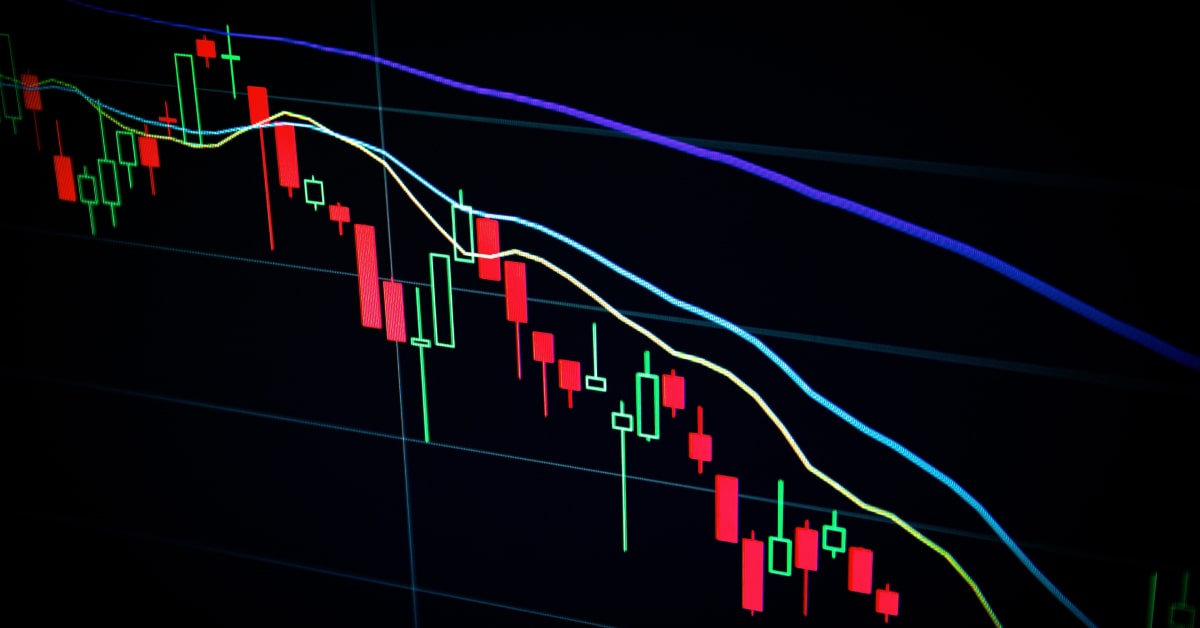Learn to trade
NETH25 and Beyond: Exploring Dutch Equities and Global Alternatives
Analysing the NETH25 and its Alternatives
The NETH25, a key index on the Euronext Amsterdam exchange, tracks the performance of 25 leading Dutch companies across diverse sectors like finance, technology, consumer goods, and energy. By analysing its constituents, we gain valuable insights into the health of the Netherlands' economy.
However, it's crucial to differentiate between the index and the exchange itself. The NETH25 is an index, reflecting the performance of specific companies. In contrast, Euronext Amsterdam is the exchange, providing the platform for buying and selling those company shares.
While investing in any index, including the NETH25, carries inherent risks, large-cap companies like those it comprises generally offer greater stability and lower volatility than smaller firms. Nevertheless, even they remain susceptible to market fluctuations. Economic downturns, industry-specific challenges, and unforeseen events can all impact their values and lead to potential losses.
While the NETH25 does carry certain risks, it's undeniably the primary route for investors seeking direct access to the Dutch equity market. This popularity stems from its representation of 25 leading Dutch companies across various sectors. However, before diving in, it's crucial to understand and acknowledge the potential downsides alongside the benefits.
Examining Alternatives to the NETH25
The NETH25 offers a familiar window into the Dutch economy, but looking beyond can unearth valuable insights. Indices like the FRA40 (France), GER40 (Germany), OMXC (Denmark), SPA35 (Spain), and SWI20 (Switzerland) showcase distinct geographical perspectives and industry compositions, painting a broader picture of the global economic landscape.
Caution: Investing outside of established benchmarks can involve increased complexity and potential risks.
Here's a breakdown of what you need to consider:
- Research and analysis: You'll need to dedicate time and effort to researching individual companies or smaller indices. Understanding their business models, financials, and competitive landscapes is essential before making informed investment decisions.
- Market volatility: Smaller companies or sectors outside the NETH25 can be more susceptible to market fluctuations, potentially leading to larger swings in your portfolio value.
- Liquidity: Less liquid stocks may be harder to buy and sell quickly, especially when market conditions are volatile.
Potential risks:
- Company-specific risks: Smaller companies are more vulnerable to individual company failures or setbacks, which could significantly impact your investment.
- Sector risks: Investing in specific sectors outside the NETH25 exposes you to concentrated risks within those industries.
- Information asymmetry: It can be more challenging to access accurate and timely information about smaller companies compared to those in the NETH25.
- Each market has its own nuances, and understanding their intricate interactions requires dedicated research and due diligence.
The FRA40: A Snapshot of the French Economy
The FRA40, also known as the CAC 40, is a French stock market index. It represents the 40 largest equities based on market capitalisation listed on the Euronext Paris. The FRA40 includes companies from various sectors, including finance, manufacturing, and energy, making it a comprehensive economic indicator for France.
Caution: While the FRA40 offers a broad overview, it primarily focuses on large, established companies. Consider:
- Limited exposure to smaller, high-growth businesses: The French economy boasts a dynamic startup scene. Excluding these from your investment strategy might hinder potential returns.
- Susceptibility to large-cap volatility: Large companies can be swayed by global economic fluctuations, impacting the FRA40 more than smaller, more domestic-focused indexes.
- Sectoral concentration: The FRA40's weight towards finance and industrials might not align with your desired diversification strategy.
The GER40: Germany's Mid-Cap Powerhouse
The GER40 is a German stock index that tracks the performance of 40 companies trading on the Frankfurt Stock Exchange. While it excludes the largest German companies found in the DAX30, the GER40 offers valuable insights into the performance of Germany's smaller, yet still important, businesses. Notably, some argue that mid-cap indexes like the GER40 provide a more accurate reflection of the overall health of an economy compared to large-cap indexes, similar to the FTSE 250 in the UK and the Russell 2000 in the US.
Caution: Mid-cap stocks can offer higher risk-reward potential, but:
- Increased volatility: The GER40 can be more susceptible to market swings than the DAX30, requiring a higher risk tolerance.
- Lower liquidity: Buying and selling GER40 stocks might be less efficient, especially during volatile periods.
- Company-specific risks: Mid-cap companies are more vulnerable to individual failures, potentially impacting your portfolio significantly.

The NOR25: Norway's Energy-Driven Index
The NOR25 is a stock index that represents the 25 most liquid companies on the Oslo Stock Exchange in Norway. Given Norway's status as a significant energy producer, the NOR25 is heavily weighted towards energy companies, particularly those in the oil and gas sector.
Caution: The NOR25's heavy energy weighting exposes you to:
- Commodity price fluctuations: Oil and gas prices are volatile, directly impacting the NOR25's performance.
- Geopolitical risks: The energy sector is sensitive to geopolitical tensions, potentially causing sudden market shifts.
- Limited diversification: Overexposure to one sector might not align with your desired risk management strategy.
The SPA35: Spain's Economic Barometer
The SPA35, commonly known as the IBEX 35, is the benchmark stock market index of the Bolsa de Madrid, Spain's principal stock exchange. This index includes the 35 most liquid Spanish stocks traded in the market, spanning various sectors such as finance, energy, and telecommunications.
Caution: The SPA35 reflects Spain's economy, which still faces:
- Sovereign debt concerns: Spain's public debt remains high, potentially impacting investor confidence and market stability.
- Uneven economic recovery: The Spanish economy is recovering from the pandemic, but its pace varies across sectors, requiring careful selection.
- Eurozone dependence: Spain's economic performance is tied to the broader Eurozone, adding another layer of complexity.
The SWI20: Switzerland's Financial Power Index
The SWI20, or the Swiss Market Index, is Switzerland's blue-chip stock market index. Composed of 20 of the largest and most liquid Swiss Performance Index (SPI) large- and mid-cap stocks, the SWI20 is heavily influenced by the financial sector due to the prominence of Swiss banks.
Caution: The SWI20's financial sector concentration exposes you to:
- Regulatory risks: Changing financial regulations can significantly impact the profitability of banks and other financial institutions.
- Interest rate sensitivity: The SWI20 is sensitive to interest rate changes, as they affect bank earnings and overall market sentiment.
- Global banking competition: Swiss banks face fierce competition from international players, potentially impacting their long-term performance.
Understanding How Economic Indicators Impact the NETH25 and its Alternatives
While economic indicators like GDP growth, interest rates, and unemployment rates undeniably influence major indices, a deeper understanding reveals the complexities at play.
- GDP Growth: While low growth or recession can hamper stock market performance, it's important to recognize the nuances. Specific sectors within the index may react differently. For example, defensive sectors like healthcare and consumer staples might hold steady compared to cyclical sectors like energy or materials.
- Interest Rates: The impact of interest rates depends on individual companies and industry dynamics. While rising rates can initially dampen overall economic activity, certain sectors like financials can benefit from wider interest rate margins. Additionally, if high interest rates are perceived as a tool to combat inflation, investors might anticipate future rate cuts, potentially boosting risk appetite and supporting the market.
- Unemployment Rates: High unemployment can indeed signal economic distress, potentially leading to lower consumer spending. However, the impact varies across sectors. Companies catering to essential needs or offering affordable luxuries might be less affected compared to discretionary spending sectors. Furthermore, government stimulus programs in response to high unemployment can inject funds into the economy, mitigating negative impacts.
Remember: Analysing the true impact of economic indicators on all major indices requires a nuanced approach, delving beyond surface-level data. Simply relying on headline numbers can lead to inaccurate assessments and missed opportunities. It's crucial to dig deeper into individual company fundamentals, sector trends, and global economic dynamics to understand the intricate interplay of factors influencing the index and potential investment choices.
Additional considerations:
- Global interconnectedness: The NETH25 is exposed to global economic forces, so consider international factors alongside domestic indicators.
- Investor sentiment: Market psychology plays a significant role in interpreting economic data. Fear and optimism can amplify or mute the actual impact of indicators.
- Company-specific news: Individual company news and events can significantly influence stock prices, independent of broader economic trends.
By appreciating the multifaceted nature of economic indicators and their unique effects on different companies and sectors, investors can make more informed decisions about the NETH25 and its alternatives.
Conclusion
While large-cap and blue-chip companies like those in the NETH25 and its alternative indices offer valuable insights into global economies, it's important to remember that even established players can experience losses.
The material provided here has not been prepared in accordance with legal requirements designed to promote the independence of investment research and as such is considered to be a marketing communication. Whilst it is not subject to any prohibition on dealing ahead of the dissemination of investment research we will not seek to take any advantage before providing it to our clients.
Pepperstone doesn’t represent that the material provided here is accurate, current or complete, and therefore shouldn’t be relied upon as such. The information, whether from a third party or not, isn’t to be considered as a recommendation; or an offer to buy or sell; or the solicitation of an offer to buy or sell any security, financial product or instrument; or to participate in any particular trading strategy. It does not take into account readers’ financial situation or investment objectives. We advise any readers of this content to seek their own advice. Without the approval of Pepperstone, reproduction or redistribution of this information isn’t permitted.
